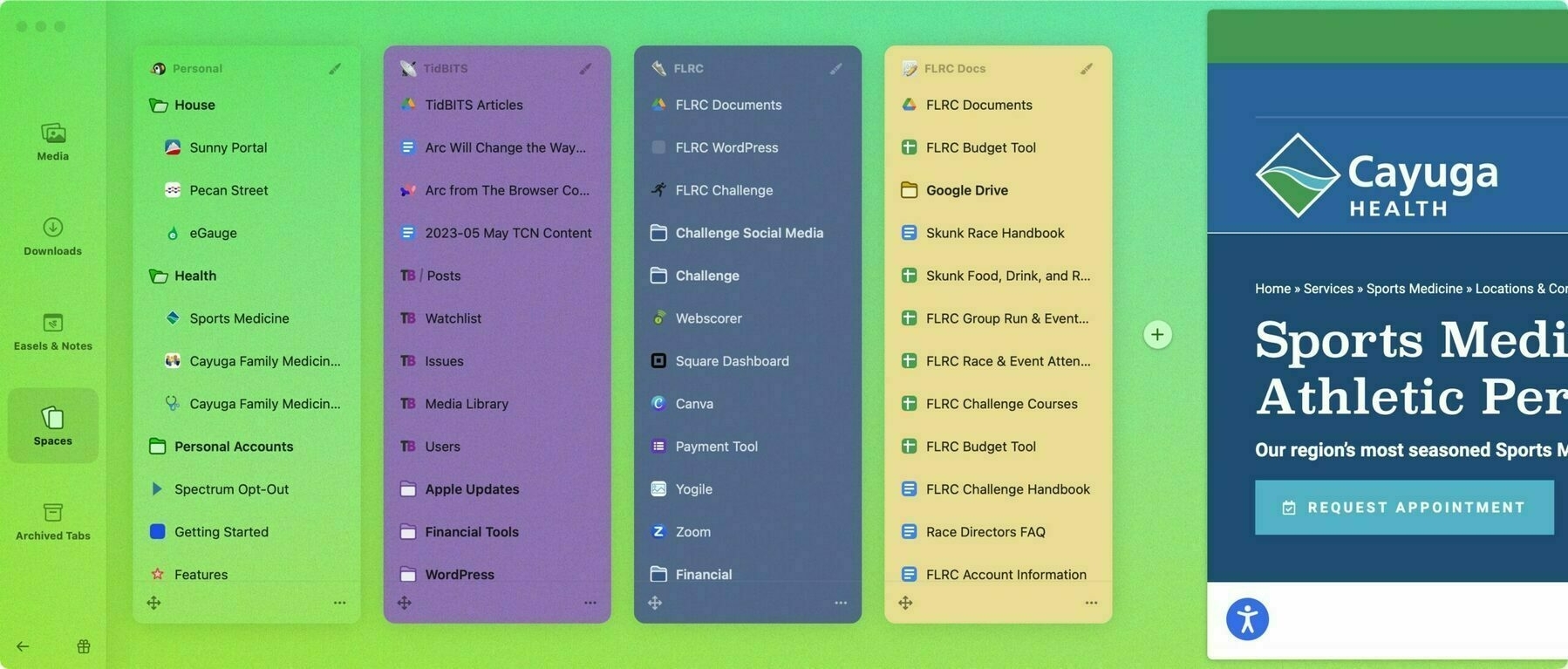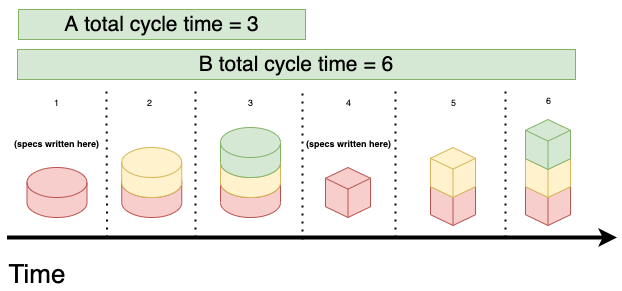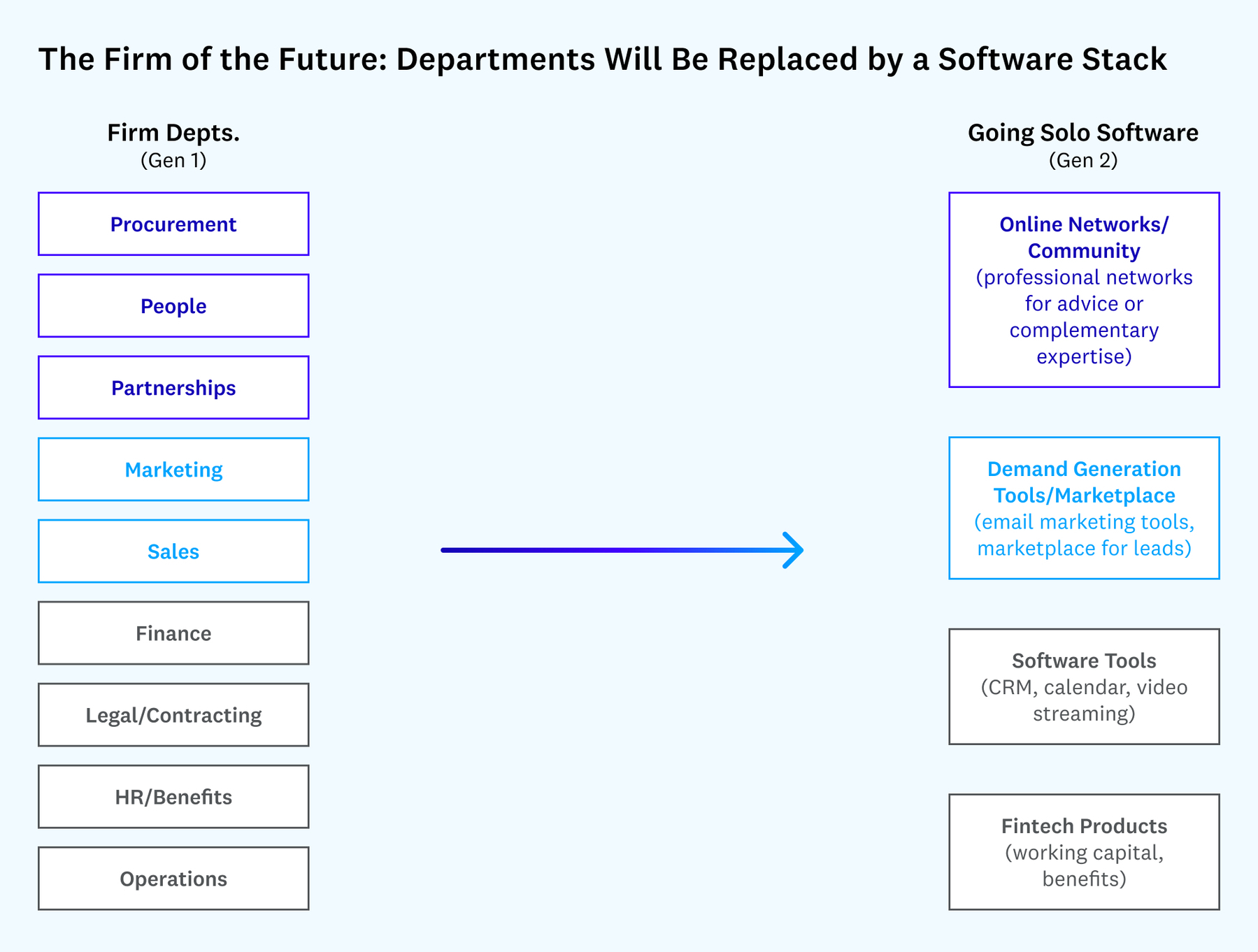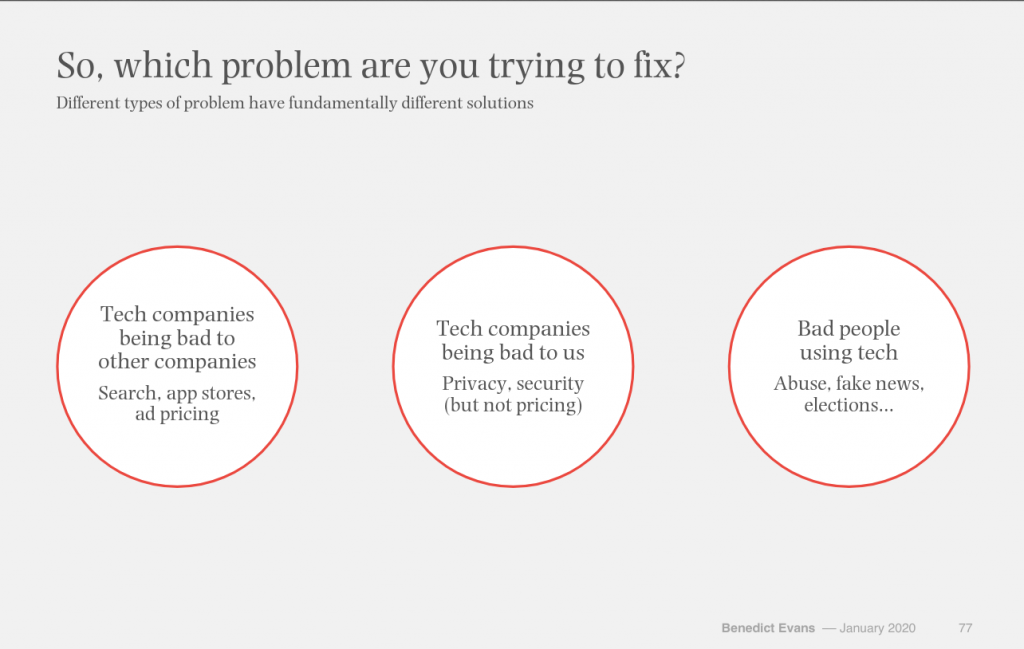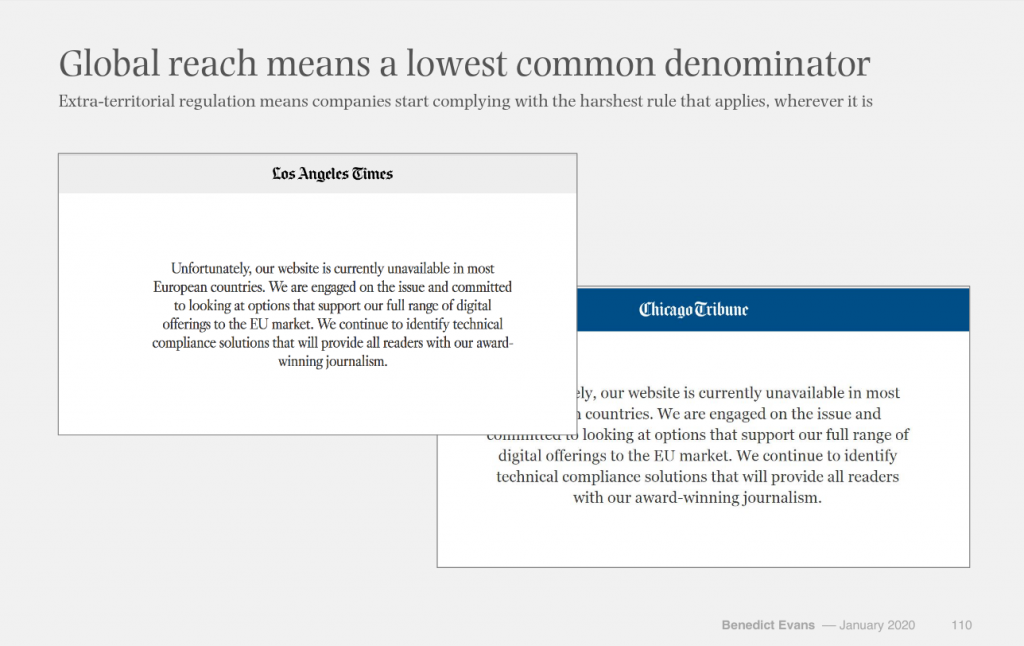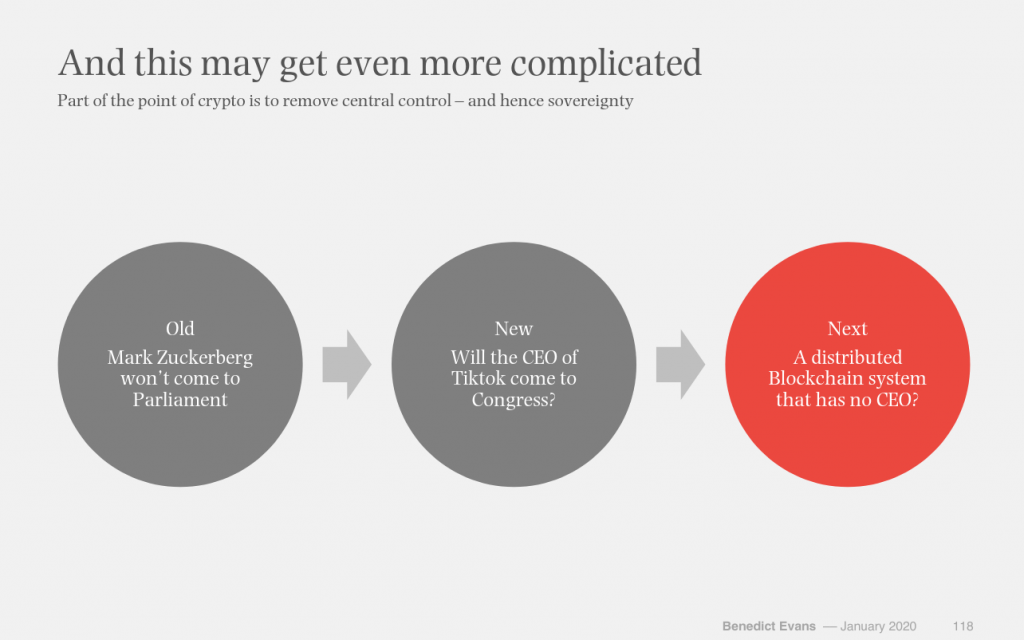- Build in 'Spaces' (for client projects, etc.)
- Split screen view
- Easel (clip *live* parts of web pages)
- Operational support: functions like finance, legal, and HR that help people do their jobs
- Demand: generating customers (through marketing/sales, branding, and relationships)
- Networks: access to communities that support the individual
- How does a computer ‘see’ gender? (Pew Research Center) — "Machine learning tools can bring substantial efficiency gains to analyzing large quantities of data, which is why we used this type of system to examine thousands of image search results in our own studies. But unlike traditional computer programs – which follow a highly prescribed set of steps to reach their conclusions – these systems make their decisions in ways that are largely hidden from public view, and highly dependent on the data used to train them. As such, they can be prone to systematic biases and can fail in ways that are difficult to understand and hard to predict in advance."
- The Communication We Share with Apes (Nautilus) — "Many primate species use gestures to communicate with others in their groups. Wild chimpanzees have been seen to use at least 66 different hand signals and movements to communicate with each other. Lifting a foot toward another chimp means “climb on me,” while stroking their mouth can mean “give me the object.” In the past, researchers have also successfully taught apes more than 100 words in sign language."
- Why degrowth is the only responsible way forward (openDemocracy) — "If we free our imagination from the liberal idea that well-being is best measured by the amount of stuff that we consume, we may discover that a good life could also be materially light. This is the idea of voluntary sufficiency. If we manage to decide collectively and democratically what is necessary and enough for a good life, then we could have plenty."
- 3 times when procrastination can be a good thing (Fast Company) — "It took Leonardo da Vinci years to finish painting the Mona Lisa. You could say the masterpiece was created by a master procrastinator. Sure, da Vinci wasn’t under a tight deadline, but his lengthy process demonstrates the idea that we need to work through a lot of bad ideas before we get down to the good ones."
- Why can’t we agree on what’s true any more? (The Guardian) — "What if, instead, we accepted the claim that all reports about the world are simply framings of one kind or another, which cannot but involve political and moral ideas about what counts as important? After all, reality becomes incoherent and overwhelming unless it is simplified and narrated in some way or other.
- A good teacher voice strikes fear into grown men (TES) — "A good teacher voice can cut glass if used with care. It can silence a class of children; it can strike fear into the hearts of grown men. A quiet, carefully placed “Excuse me”, with just the slightest emphasis on the “-se”, is more effective at stopping an argument between adults or children than any amount of reason."
- Freeing software (John Ohno) — "The only way to set software free is to unshackle it from the needs of capital. And, capital has become so dependent upon software that an independent ecosystem of anti-capitalist software, sufficiently popular, can starve it of access to the speed and violence it needs to consume ever-doubling quantities of to survive."
- Young People Are Going to Save Us All From Office Life (The New York Times) — "Today’s young workers have been called lazy and entitled. Could they, instead, be among the first to understand the proper role of work in life — and end up remaking work for everyone else?"
- Global climate strikes: Don’t say you’re sorry. We need people who can take action to TAKE ACTUAL ACTION (The Guardian) — "Brenda the civil disobedience penguin gives some handy dos and don’ts for your civil disobedience"
- The product is only as good as the plan for the product.
- The best teamwork is a healthy rivalry.
- The database is the software base.
- Don’t just fix the mistakes — fix whatever permitted the mistake in the first place.
Switching to Arc
It’s not often I’ll post tools here, but after a few days of using it, I’m sold on the Arc browser.
My web browser history over the last quarter of a century goes something like: Netscape Navigator –> Internet Explorer –> Firefox –> Chrome –> Brave –> Arc.
Perhaps I should record a screencast, but the three things I like most about Arc are:
Experience a calmer, more personal internet in this browser designed for you. Let go of the clicks, the clutter, the distractions.Source: Arc | The Browser Company
Arc browser is pretty nifty
I’m not going to gush as I’ve had it installed mere hours, but this article persuaded me to actually use the invite code I’d got for the Arc browser. First impressions were good enough for it to replace Brave as my default, for the time being, on my Mac Studio.
My colleague Laura always has tabs for client projects to hand, as she has a Firefox extension which separates tab groups. Arc does this quickly, seamlessly, and by default. Also, I used to have my tabs at the side of my browser and I’m not sure why or how I got out of the habit of doing so.
There are lots of other nice things about Arc which are mentioned in the review. It’s Chromium-based, so everything just works, including bringing across your bookmarks, saved passwords, and browsing history.
I realize calling Arc “the most transformative app I’ve used in decades” is a bold statement that requires a lot of support. I won’t skimp on words in this article telling you why—it’s that important and requires new ways of thinking about how you work on the Web.Source: Arc Will Change the Way You Work on the Web | TidBITS[…]
If the sidebar is Arc’s most prominent interface element, Spaces is the feature that leverages it more than anything else in Arc. A Space is a collection of tabs in the sidebar. It’s easy to switch between them using keyboard shortcuts (Control-1, Control-2, etc., or Command-Option-Left/Right Arrow) or by clicking little icons at the bottom of the sidebar.
You can assign each Space a color, providing an instant visual clue for what Space you’re in. For me, Personal is a green/yellow/teal gradient, TidBITS is purple, and FLRC is blue, while my fourth space—set to hold FLRC tabs for Google Docs and Google Sheets—is yellow. Each Space can also have a custom emoji or icon that identifies it in the switcher at the bottom of the sidebar.
[…]
The most obvious part of Arc’s visual interface is its sidebar. As I said earlier, the sidebar provides access to multiple color-coded Spaces, each with its own collection of tabs. It’s easy to gloss over the importance of putting tabs in a sidebar, but that would be a mistake. Sidebar tabs aren’t simply a vertical version of tabs across the top of the browser window, they’re substantively better.
[…]
But what the sidebar really provides is a sense of comfort, of familiarity. There’s a French phrase, mise en place, that refers to setting out all your ingredients and tools before cooking so everything you need is at hand when you need it. Arc’s sidebar, when populated with the pinned tabs you use and arranged the way you think, provides that sense of mise en place. I actually want to sit down at Arc because it helps me channel my thoughts and actions toward my goals for the day.
Finish what you start
This article uses the analogy of a burger chef to show how software teams can be more productive by focusing on a small number of features at a time.
I think this is more widely applicable. The factory production line was designed to make already-designed things with the fewest mistakes. It does not make people happy, nor does it foster creativity.
Figuring out problems is hard. It’s kind of what I do for a living. Having lots of different things on the go at the same time does not improve things, it makes each one worse.
Now that we understand the burger and the software variations of the problem, we can make a recommendation to both cooks and software engineers alike:Source: How finishing what you start makes teams more productive and predictable | Lucas F. CostaReducing transaction costs enables small batches. Small batches, in turn, reduce average cycle times, diminish risk, and enhance reliability.
You should only start without having finished when transaction costs are high, and it wouldn’t make economic sense to spend time decreasing them, either because you have agreed to a particular delivery date or because you don’t have the capital to invest.
That said, I’d be careful to avoid falling into a situation where “you’re too busy draining the flood to be able to fix the leak”. The earlier you decrease transaction costs, the earlier you’ll be reaping the benefits from having done it.
Optimising for feelings, ceding control to the individual
It would be easy to dismiss this as the musings of a small company before they get to scale. However, what I like about it is that the three things they suggest for software developers (look inward, look away from your screen, cede control to the individual) actually constitute very good advice.
So, if not numbers, what might we optimize for when crafting software?Source: Optimizing For Feelings | The Browser CompanyIf we’ve learned anything, it’s that all numerical metrics will be gamed, and that by default these numbers lack soul. After all, a life well-lived means something a little different to almost everyone. So it seems a little funny that the software we use almost every waking hour has the same predetermined goals for all of us in mind.
In the end, we decided that we didn’t want to optimize for numbers at all. We wanted to optimize for feelings.
While this may seem idealistic at best or naive at worst, the truth is that we already know how to do this. The most profound craftsmanship in our world across art, design, and media has long revolved around feelings.
[…]
You see — if software is to have soul, it must feel more like the world around it. Which is the biggest clue of all that feeling is what’s missing from today’s software. Because the value of the tools, objects, and artworks that we as humans have surrounded ourselves with for thousands of years goes so far beyond their functionality. In many ways, their primary value might often come from how they make us feel by triggering a memory, helping us carry on a tradition, stimulating our senses, or just creating a moment of peace.
Bring Your Own Stack
Venture Capitalists inhabit a slightly different world than the rest of us. This post, for example, paints a picture of a future that makes sense to people deeply enmeshed in Fintech, but not for those of us outside of that bubble.
That being said, there’s a nugget of truth in there about the need for more specific services for particular sectors, rather than relying on generic ones provides by Big Tech.
However, the chances are that those will simply plug in to existing marketplaces (e.g. Google Workplace) rather than strike out on their own. But, what do I know?
There’s a pressing need — and an opportunity — to build vertical-specific tools for workers striking out on their own. Much has been written about the proliferation of vertical software tools that help firms run their businesses, but the next generation of great companies will provide integrated, vertical software for individuals going solo.Source: As More Workers Go Solo, the Software Stack Is the New Firm | FutureSolo workers venturing out on their own need to feel like they can replace the support of a company model. Traditionally, the firm brings three things to support the core craft or product:
The solo stacks of the future will offer a mix of these three things (depending on what makes sense for any industry), giving workers the tools — and thus, the confidence — to leave their jobs. The software will be vertical-specific, as well, as lawyers, personal trainers, money managers, and graphic designers all need different tools, have different customers to market to, and require access to different networks to do their jobs.
Software ate the world, so all the world’s problems get expressed in software
Benedict Evans recently posted his annual 'macro trends' slide deck. It's incredibly insightful, and work of (minimalist) art. This article's title comes from his conclusion, and you can see below which of the 128 slides jumped out at me from deck:
For me, what the deck as a whole does is place some of the issues I've been thinking about in a wider context.
My team is building a federated social network for educators, so I'm particularly tuned-in to conversations about the effect social media is having on society. A post by Harold Jarche where he writes about his experience of Twitter as a rage machine caught my attention, especially the part where he talks about how people are happy to comment based on the 'preview' presented to them in embedded tweets:
Research on the self-perception of knowledge shows how viewing previews without going to the original article gives an inflated sense of understanding on the subject, “audiences who only read article previews are overly confident in their knowledge, especially individuals who are motivated to experience strong emotions and, thus, tend to form strong opinions.” Social media have created a worldwide Dunning-Kruger effect. Our collective self-perception of knowledge acquired through social media is greater than it actually is.
Harold Jarche
I think our experiment with general-purpose social networks is slowly coming to an end, or at least will do over the next decade. What I mean is that, while we'll still have places where you can broadcast anything to anyone, the digital environments we'll spend more time will be what Venkatesh Rao calls the 'cozyweb':
Unlike the main public internet, which runs on the (human) protocol of “users” clicking on links on public pages/apps maintained by “publishers”, the cozyweb works on the (human) protocol of everybody cutting-and-pasting bits of text, images, URLs, and screenshots across live streams. Much of this content is poorly addressable, poorly searchable, and very vulnerable to bitrot. It lives in a high-gatekeeping slum-like space comprising slacks, messaging apps, private groups, storage services like dropbox, and of course, email.
Venkatesh Rao
That's on a personal level. I should imagine organisational spaces will be a bit more organised. Back to Jarche:
We need safe communities to take time for reflection, consideration, and testing out ideas without getting harassed. Professional social networks and communities of practices help us make sense of the world outside the workplace. They also enable each of us to bring to bear much more knowledge and insight that we could do on our own.
Harold Jarche
...or to use Rao's diagram which is so-awful-it's-useful:
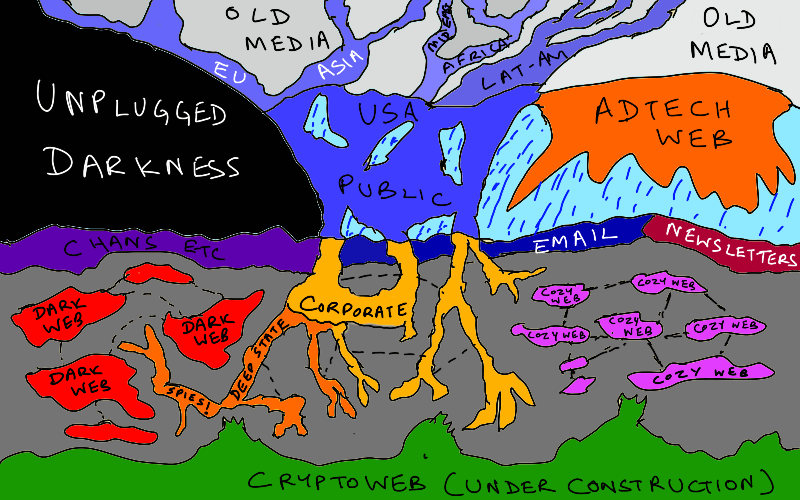
Of course, blockchain/crypto could come along and solve all of our problems. Except it won't. Humans are humans (are humans).
Ever since Eli Parisier's TED talk urging us to beware online "filter bubbles" people have been wringing their hands about ensuring we have 'balance' in our networks.
Interestingly, some recent research by the Reuters Institute at Oxford University, paints a slightly different picture. The researcher, Dr Richard Fletcher begins by investigating how people access the news.
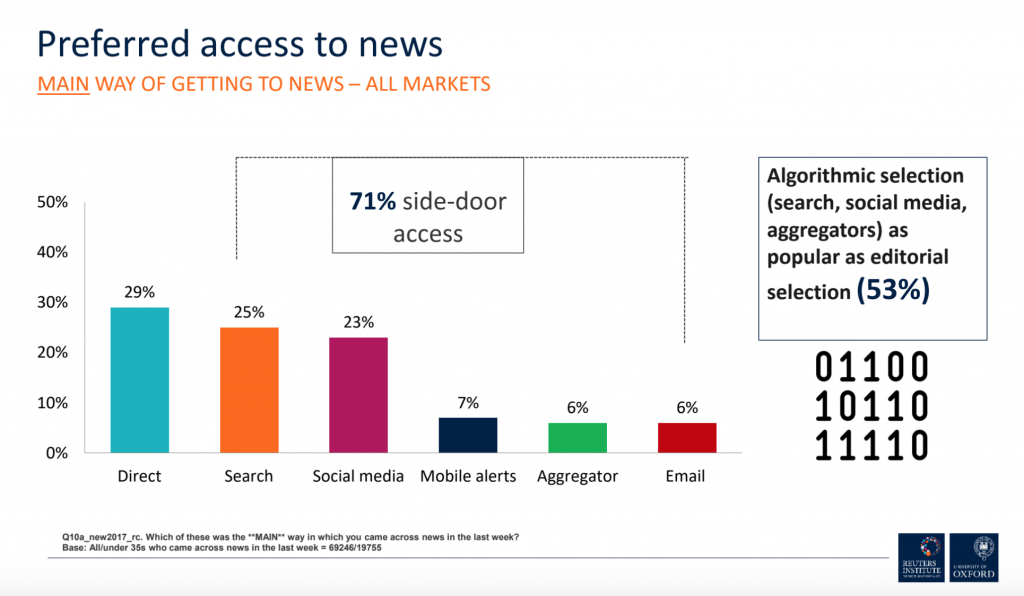
Fletcher draws a distinction between different types of personalisation:
Self-selected personalisation refers to the personalisations that we voluntarily do to ourselves, and this is particularly important when it comes to news use. People have always made decisions in order to personalise their news use. They make decisions about what newspapers to buy, what TV channels to watch, and at the same time which ones they would avoid
Academics call this selective exposure. We know that it's influenced by a range of different things such as people's interest levels in news, their political beliefs and so on. This is something that has pretty much always been true.
Pre-selected personalisation is the personalisation that is done to people, sometimes by algorithms, sometimes without their knowledge. And this relates directly to the idea of filter bubbles because algorithms are possibly making choices on behalf of people and they may not be aware of it.
The reason this distinction is particularly important is because we should avoid comparing pre-selected personalisation and its effects with a world where people do not do any kind of personalisation to themselves. We can't assume that offline, or when people are self-selecting news online, they're doing it in a completely random way. People are always engaging in personalisation to some extent and if we want to understand the extent of pre-selected personalisation, we have to compare it with the realistic alternative, not hypothetical ideals.
Dr Richard Fletcher
Read the article for the details, but the takeaways for me were twofold. First, that we might be blaming social media for wider and deeper divisons within society, and second, that teaching people to search for information (rather than stumble across it via feeds) might be the best strategy:
People who use search engines for news on average use more news sources than people who don't. More importantly, they're more likely to use sources from both the left and the right.
Dr Richard Fletcher
People who rely mainly on self-selection tend to have fairly imbalanced news diets. They either have more right-leaning or more left-leaning sources. People who use search engines tend to have a more even split between the two.
Useful as it is, what I think this research misses out is the 'black box' algorithms that seek to keep people engaged and consuming content. YouTube is the poster child for this. As Jarche comments:
We are left in a state of constant doubt as conspiratorial content becomes easier to access on platforms like YouTube than accessing solid scientific information in a journal, much of which is behind a pay-wall and inaccessible to the general public.
Harold Jarche
This isn't an easy problem to solve.
We might like to pretend that human beings are rational agents, but this isn't actually true. Let's take something like climate change. We're not arguing about the facts here, we're arguing about politics. Adrian Bardon, writing in Fast Company, writes:
In theory, resolving factual disputes should be relatively easy: Just present evidence of a strong expert consensus. This approach succeeds most of the time, when the issue is, say, the atomic weight of hydrogen.
But things don’t work that way when the scientific consensus presents a picture that threatens someone’s ideological worldview. In practice, it turns out that one’s political, religious, or ethnic identity quite effectively predicts one’s willingness to accept expertise on any given politicized issue.
Adrian Bardon
This is pretty obvious when we stop to think about it for a moment; beliefs are bound up with identity, and that's not something that's so easy to change.
In ideologically charged situations, one’s prejudices end up affecting one’s factual beliefs. Insofar as you define yourself in terms of your cultural affiliations, information that threatens your belief system—say, information about the negative effects of industrial production on the environment—can threaten your sense of identity itself. If it’s part of your ideological community’s worldview that unnatural things are unhealthful, factual information about a scientific consensus on vaccine or GM food safety feels like a personal attack.
Adrian Bardon
So how do we change people's minds when they're objectively wrong? Brian Resnick, writing for Vox, suggests the best approach might be 'deep canvassing':
Giving grace. Listening to a political opponent’s concerns. Finding common humanity. In 2020, these seem like radical propositions. But when it comes to changing minds, they work.
[...]
The new research shows that if you want to change someone’s mind, you need to have patience with them, ask them to reflect on their life, and listen. It’s not about calling people out or labeling them fill-in-the-blank-phobic. Which makes it feel like a big departure from a lot of the current political dialogue.
Brian Resnick
This approach, it seems, works:
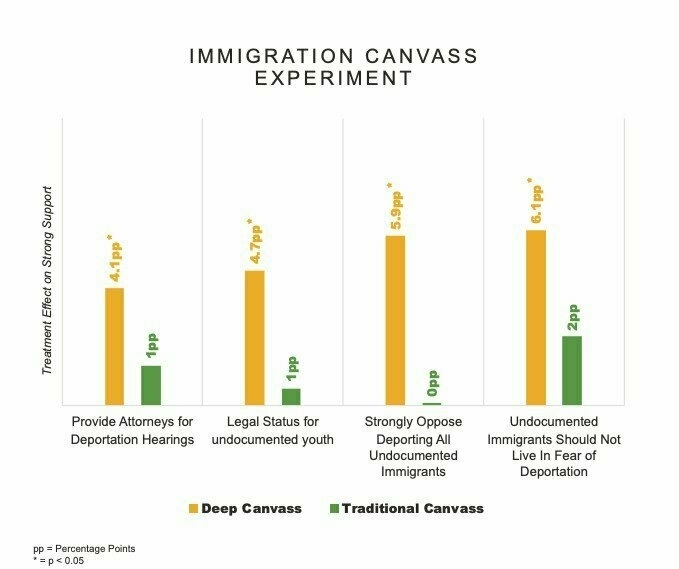
So it seems there is some hope to fixing the world's problems. It's just that the solutions point towards doing the hard work of talking to people and not just treating them as containers for opinions to shoot down at a distance.
Enjoy this? Sign up for the weekly roundup and/or become a supporter!
Saturday strikings
This week's roundup is going out a day later than usual, as yesterday was the Global Climate Strike and Thought Shrapnel was striking too!
Here's what I've been paying attention to this week:
Through the looking-glass
Earlier this month, George Dyson, historian of technology and author of books including Darwin Among the Machines, published an article at Edge.org.
In it, he cites Childhood’s End, a story by Arthur C. Clarke in which benevolent overlords arrive on earth. “It does not end well”, he says. There’s lots of scaremongering in the world at the moment and, indeed, some people have said for a few years now that software is eating the world.
Dyson comments:
The genius — sometimes deliberate, sometimes accidental — of the enterprises now on such a steep ascent is that they have found their way through the looking-glass and emerged as something else. Their models are no longer models. The search engine is no longer a model of human knowledge, it is human knowledge. What began as a mapping of human meaning now defines human meaning, and has begun to control, rather than simply catalog or index, human thought. No one is at the controls. If enough drivers subscribe to a real-time map, traffic is controlled, with no central model except the traffic itself. The successful social network is no longer a model of the social graph, it is the social graph. This is why it is a winner-take-all game. Governments, with an allegiance to antiquated models and control systems, are being left behind.
I think that’s an insightful point: human knowledge is seen to be that indexed by Google, friendships are mediated by Facebook, Twitter and Instagram, and to some extent what possible/desirable/interesting is dictated to us rather than originating from us.
We imagine that individuals, or individual algorithms, are still behind the curtain somewhere, in control. We are fooling ourselves. The new gatekeepers, by controlling the flow of information, rule a growing sector of the world.What deserves our full attention is not the success of a few companies that have harnessed the powers of hybrid analog/digital computing, but what is happening as these powers escape into the wild and consume the rest of the world
Indeed. We need to raise our sights a little here and start asking governments to use their dwindling powers to break up mega corporations before Google, Amazon, Microsoft and Facebook are too powerful to stop. However, given how enmeshed they are in everyday life, I’m not sure at this point it’s reasonable to ask the general population to stop using their products and services.
Source: Edge.org
Why NASA is better than Facebook at writing software
Facebook’s motto, until recently, was “move fast and break things”. This chimed with a wider Silicon Valley brogrammer mentality of “f*ck it, ship it”.
NASA’s approach, as this (long-ish) Fast Company article explains, couldn’t be more different to the Silicon Valley narrative. The author, Charles Fishman, explains that the group who write the software for space shuttles are exceptional at what they do. And they don’t even start writing code until they’ve got a complete plan in place.
This software is the work of 260 women and men based in an anonymous office building across the street from the Johnson Space Center in Clear Lake, Texas, southeast of Houston. They work for the “on-board shuttle group,” a branch of Lockheed Martin Corps space mission systems division, and their prowess is world renowned: the shuttle software group is one of just four outfits in the world to win the coveted Level 5 ranking of the federal governments Software Engineering Institute (SEI) a measure of the sophistication and reliability of the way they do their work. In fact, the SEI based it standards in part from watching the on-board shuttle group do its work.There's an obvious impact, both in terms of financial and human cost, if something goes wrong with a shuttle. Imagine if we had these kinds of standards for the impact of social networks on the psychological health of citizens and democratic health of nations!
NASA knows how good the software has to be. Before every flight, Ted Keller, the senior technical manager of the on-board shuttle group, flies to Florida where he signs a document certifying that the software will not endanger the shuttle. If Keller can’t go, a formal line of succession dictates who can sign in his place.Software powers everything. It’s in your watch, your television, and your car. Yet the quality of most software is pretty poor.Bill Pate, who’s worked on the space flight software over the last 22 years, [/url]says the group understands the stakes: “If the software isn’t perfect, some of the people we go to meetings with might die.
“It’s like pre-Sumerian civilization,” says Brad Cox, who wrote the software for Steve Jobs NeXT computer and is a professor at George Mason University. “The way we build software is in the hunter-gatherer stage.”The NASA team can sum-up their process in four propositions:John Munson, a software engineer and professor of computer science at the University of Idaho, is not quite so generous. “Cave art,” he says. “It’s primitive. We supposedly teach computer science. There’s no science here at all.”
The most important things the shuttle group does — carefully planning the software in advance, writing no code until the design is complete, making no changes without supporting blueprints, keeping a completely accurate record of the code — are not expensive. The process isn’t even rocket science. Its standard practice in almost every engineering discipline except software engineering.I'm going to be bearing this in mind as we build MoodleNet. We'll have to be a bit more agile than NASA, of course. But planning and process is important stuff.
Source: Fast Company

